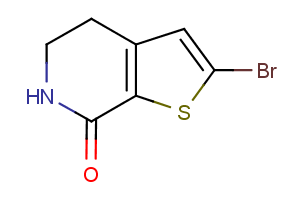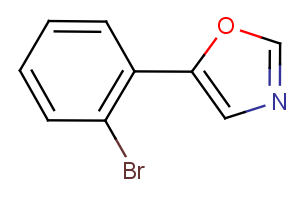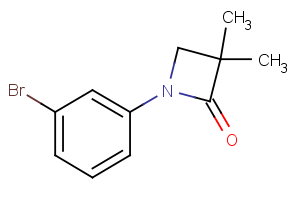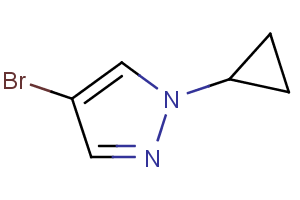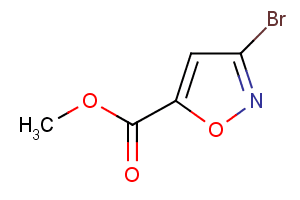BIONET bromine fragment library
Key Organics have constructed a BIONET Bromine Fragment Library which includes 314 brominated fragments.
Key Features & Benefits:
- Measured solubility in PBS buffer ≥ 100μM by ¹H NMR
- Fragments soluble in DMSO at 200mM
- Purity ≥ 95%
- Filtered for PAINS substructures
- Excludes fragments likely to form aggregates
The parameters used in the design of the library are:
- Heavy atoms ≤ 16
- MW ≤ 300
- clogP ≤3.3
- Hydrogen bond donors ≤3
- Hydrogen bond acceptors ≤4
- tPSA ≤ 70
- Rotatable bonds ≤ 3
Properties were calculated using DataWarrior1 and FAFDrugs42.
The library excludes substructures identified as promiscuous or reactive by the following empirically determined rejection rules:
- Lilly MedChem Rules3
- PAINS4
- FAFDrugs42
¹H NMR curation for fragment prioritisation and library characterization
1H NMR were employed to select compounds with the appropriate solution behaviour to be amenable to rigorous biophysical analysis in physiologically relevant aqueous solution. Each singleton sample consisted of nominal 300 μM compound in buffer (50 mM sodium phosphate pH 7.4, 100 mM NaCl). 1H NMR spectra were acquired on a 600 MHz spectrometer equipped with a helium cryoprobe that significantly increased signal-to-noise. Simple 1D 1H NMR spectra were acquired along with a series of 1D 1H CPMG spectra, which were used to detect compounds showing potential aggregation in aqueous solution. The CMC Assist automation software allowed for an automatic readout of the fragment concentration that was experimentally derived from integrating the NMR resonances of each singleton sample and referencing to standardized samples using the ERETIC module (Bruker Spectrospin Inc.)10. The CMC Assist module also allowed for verification of each singleton spectrum to determine if the spectral attributes were consistent with the proposed primary structure of the corresponding fragment. This exercise was also complemented by an automated analysis using Spectral DB software (ACD Inc.).
Key Organics Bromine Fragment Library exclude fragments likely to form aggregates
The spin−spin relaxation Carr−Purcell−Meiboom−Gill NMR experiment has been employed to detect and remove aggregate species from Key Organics BIONET Bromine Fragment library.5
Small molecules can self-assemble in aqueous solution into a wide range of nanoentity types and sizes each having their own unique properties. This has important consequences in the context of drug discovery including issues related to nonspecific binding, off-target effects, and false positives and negatives. The spin−spin relaxation Carr−Purcell−Meiboom−Gill NMR experiment is sensitive to molecular tumbling rates and can expose larger aggregate species that have slower rotational correlations. The strategy easily distinguishes lone-tumbling molecules versus nanoentities of various sizes. The technique is highly sensitive to chemical exchange between single molecule and aggregate states and can therefore be used as a reporter when direct measurement of aggregates is not possible by NMR.
Overview of calculated properties of the final library
Diversity Statistics
# clusters at 0.85 similarity = 205 singletons. 248 clusters / 314 fragments = 79%
Diversity
References
1. DataWarrior: An Open-Source Program for Chemistry Aware Data Visualization and Analysis. J Chem Inf Model 2015.
2. FAFDrugs4: M.; Miteva, S.; Violas, M.; Montes, D.; Gomez, P.; Tuffery, B.; Villoutreix. Nucleic Acids Research. 2006, 34 (2), W738–W744.
3. Rules for identifying potentially reactive or promiscuous compounds. Bruns et al, J. Med. Chem, 2012 (53).
4. Baell, J. B.; Holloway, G. A. J. Med. Chem. 2010, 53 (7), 2719–2740.
5. Yann Ayotte, Victoria M. Marando, Louis Vaillancourt, Patricia Bouchard, Gregory Heffron, Paul W. Coote, Sacha T. Larda, and Steven R. LaPlante, J. Med. Chem. 2019, 62, 7885−7896.
Re-supply for follow up research.
We maintain good stock levels of our Fragment Libraries. Indeed, a large proportion of our collection is available in gram quantities; this means we can ensure a very high level of re-supply of originally tested compounds.
If you want to explore SAR by catalogue or some initial Chemistry we can also assist with hit follow up (nearest neighbour/analogue searching) and Hit to Lead Chemistry.
Advantages of purchasing directly from BIONET:
- Ease of purchasing directly through our online shop, by phone, or via e-mail
- Usually dispatched within 1 working day, from stock
- Dedicated customer relations department, real-time response
Fragment integrity & formats:
- Minimum Purity of fragments is >95% by LC-MS and/or 1H NMR. Analytical data for every compound purchased can be provided on request.
- Fragment compounds are available in milligram or micromole amounts in powder form plated to your requirements. Bulk amounts available on request
Database Download
To download all the latest BIONET Fragment databases.
Also to receive our updates please register here.

